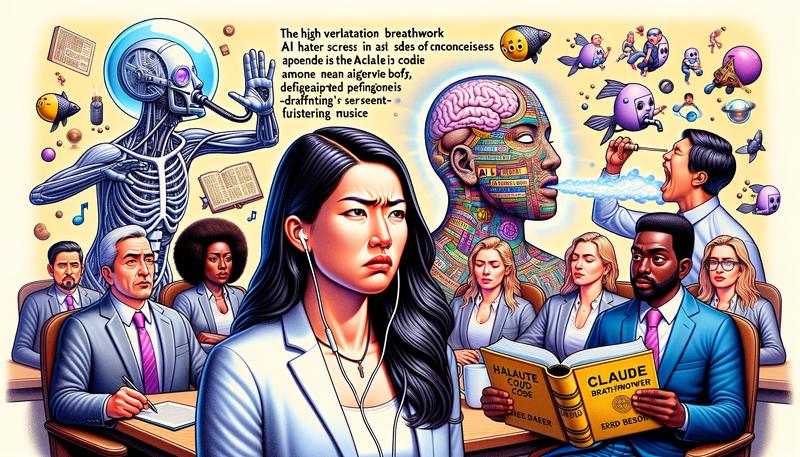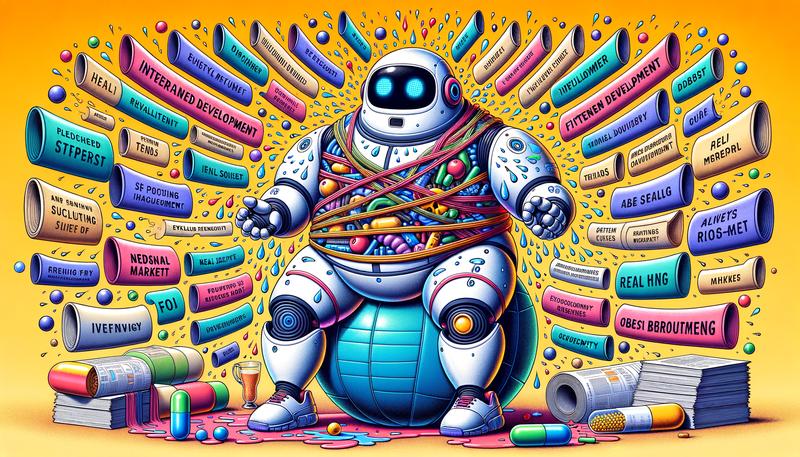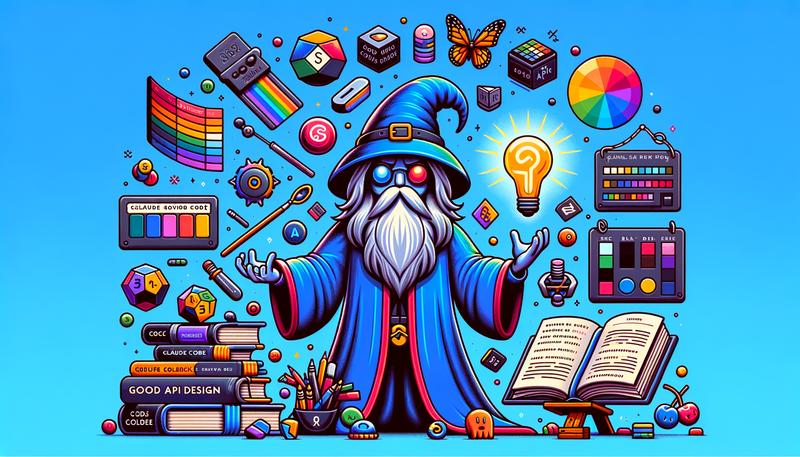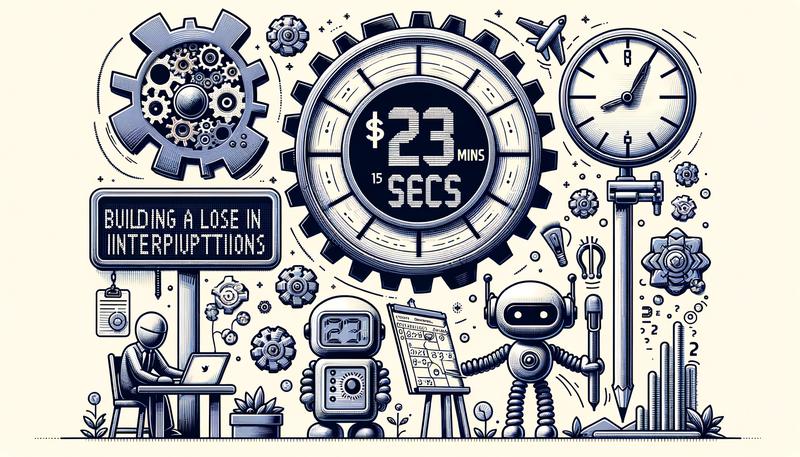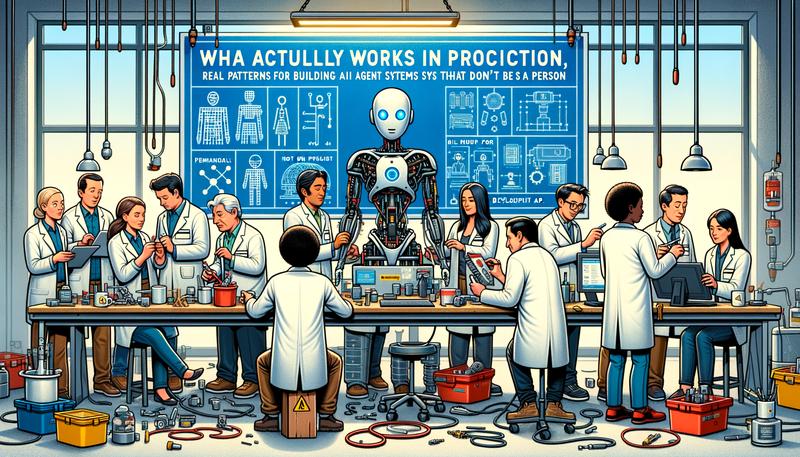In my latest blog post, I share two interesting reads: BoSacks’ interview with Gemma Peckham, the publisher of Oh Reader Magazine, and a captivating piece from InPublishing about Anthem’s print strategy. Both articles offer unique insights into the publishing world, and I loved delving into their perspectives. Check them out for some thought-provoking industry discussions!
Month: August 2025
Daily Links: Friday, Aug 29th, 2025
Hi there! In this blog post, I’m diving into my experiences and thoughts on AI hating, touching upon some intriguing tech topics as well. From exploring how music-infused breathwork leads to awesome altered states of consciousness to experimenting with a swarm of AI agents to build a product in a week, I’ve got it all covered. Plus, tips on utilizing Claude Code for non-coders and engineering leadership pitfalls. Join me!
- I Am An AI Hater: I am an AI hater. This is considered rude, but I do not care, because I am a hater.
- Neurobiological substrates of altered states of consciousness induced by high ventilation breathwork accompanied by music: The popularity of breathwork as a therapeutic tool for psychological distress is rapidly expanding. Breathwork practices that increase ventilatory rate or depth, facilitated by music, can evoke subjective experiential states analogous to altered states of consciousness (ASCs) evoked by psychedelic substances. These states include components such as euphoria, bliss, and perceptual differences. However, the neurobiological mechanisms underlying the profound subjective effects of high ventilation breathwork (HVB) remain largely unknown and unexplored. In this study, we investigated the neurobiological substrates of ASCs induced by HVB in experienced practitioners. We demonstrate that the intensity of ASCs evoked by HVB was proportional to cardiovascular sympathetic activation and to haemodynamic alterations in cerebral perfusion within clusters spanning the left operculum/posterior insula and right amygdala/anterior hippocampus; regions implicated in respiratory interoceptive representation and the processing of emotional memories, respectively. These observed regional cerebral effects may underlie pivotal mental experiences that mediate positive therapeutic outcomes of HVB.
- How to use Claude Code for non-engineering use cases: 🧠 Claude Code without the Code: Agents for PRDs, Jira tickets, SEO analysis, creating a second brain, editing spreadsheets and more.
- Building your own CLI Coding Agent with Pydantic-AI: How to build a CLI coding agent
- Engineering lead failure modes: …and how to avoid them.
- I Managed a Swarm of 20 AI Agents for a Week and Built a Product. Here Are the 8 Rules I Learned.: A couple weeks ago I went heads-down and experimented with a new development model. The results were unexpected: a production-ready application, ~800 commits, and 100+ PRs in a single week. The core idea was to stop coding linearly and instead manage a swarm of ~20 parallel AI agents. This required building a custom parallelization tool, […]
Daily Links: Thursday, Aug 28th, 2025
Hey there! In my latest blog post collection, I explored how AI is reshaping internal development, bringing insights into avoiding futile efforts in changing managers, and shared some fitness trend investigations on weighted vests. I also delved into AI-assisted tools from leading retailers, digging into debates on xG models in sports, and updates on a breakthrough obesity pill. Plus, I touched on clever engineering phrases to master AI slop. Enjoy diving in!
- One Prompt, Zero Engineers: Your New Internal Dev: Internal software development is undergoing a quiet revolution. Generative AI is transforming the equation, collapsing the gap between idea and execution. Here’s how we got here, and why the next era of internal tooling is arriving sooner than expected.
- Stop trying to change your manager: Because you don’t have the leverage to turn your manager into a different person. Here’s what to do instead.
- TBM 273: What To Do More (And Less) Of: It might sound like a leader saying, “We can work out the details later. For now it helps to keep options open. We know the big goal, and we are committed to it. The exact path can come later.” That ability to hold off until the last responsible moment—that is the powerful part.
- Chatbot Cheatsheet: A guide to the AI assistants from Walmart, L’Oréal, Amazon and more: New characters like Rufus and Sparky have quickly become the faces of the most popular retailers on the planet.
- Building AI Products In The Probabilistic Era: AI turns products from deterministic functions into probabilistic systems. That requires expanding old playbooks (SLOs, funnels, siloed finance), and reasoning in terms of trajectories, Minimum Viable Intelligence thresholds, and data as company operating system.
- “RAG is Dead, Context Engineering is King” — with Jeff Huber of Chroma: What actually matters in vector databases in 2025, why “modern search for AI” is different, and how to ship systems that don’t rot as context grows.
- How are companies driving engagement and retention?: New tactics and examples from Reddit, Replit, DuoLingo, Netflix Linear and more
- What is a color space?: In which we answer every question you’ve ever had about digital color, and some you haven’t.
- How experienced engineers get unstuck in coding interviews: In-person algorithmic interviews are not disappearing from Big Tech and many top scaleups and startups, so it’s useful to know how to succeed at them. Advice and tactics from Mike Mroczka
- A Pill to Fight Obesity Is on the Verge of Approval: In new Phase III trial data released Tuesday, people taking orforglipron lost substantially more weight than people taking a placebo.
- Are weighted vests good for bones and muscle? Fact-checking a fitness trend: It’s a growing fitness trend. People say wearing a weighted vest when you exercise builds bones, strengthens muscles and improves cardiovascular health. But does research back up these claims?
- Cronicle: A simple distributed task scheduler and runner.
- Democrats can win the redistricting war: Aggressive partisan gerrymandering is bad for democracy. But the new equilibrium is not necessarily bad for Democrats — if they play hardball.
- Why Your xG Model Might Be Wrong: The Bayesian Solution to Accurate Scoring Predictions: Using Bayesian Hierarchical Methods to Correct Player and Position Factors in Expected Goals Predictions.
- A New Expected Points Model: Learn about an adjustment we made to make our model more effective at the end of halves and games…
- 5 Tiny Phrases Every Engineer Should Use With AI: How to prevent “AI Slop”
- Dissecting the Apple M1 GPU, the end:
- Introducing Gemini 2.5 Flash Image, our state-of-the-art image model: co
Daily Links: Wednesday, Aug 27th, 2025
Hey there! In the latest blog post, I’ve gathered some fascinating reads that explore macro trends in AI, the art of being an “Expert Generalist,” and practical tips for better context management. Dive into neuroplasticity, tackle user research hurdles, and follow my AI app build journey. Plus, look out for exciting book releases and quirky MacOS icons. It’s a curated selection to spark your curiosity!
- Presentations: Every year, I produce a big presentation exploring macro and strategic trends in the tech industry. New in May 2025, ‘AI eats the world’.
- Expert Generalists: Being an Expert Generalist should be treated as a first-class skill, one that can be assessed and taught.
- How to Fix Your Context: 6 tactics for fixing your context and shipping better agents. As Karpathy says, building LLM-powered apps means learning to ‘pack the context windows just right’—smartly deploying tools, managing information, and maintaining context hygiene.
- 12 Ways to Rewire Your Brain: Beyond the Surface: A journey into the deeper dimensions of neuroplasticity
- Why Organizations Don’t Do User Research and How to Change That: Organizations avoid user research due to excuses like time, cost, and fear of negative feedback, leading to poor product decisions and wasted resources.
- Building My First AI Product: 6 Lessons from My 90-Day Deep Dive: From broken ankle to breakthrough: Building my first AI app in 90 days with lessons on architecture, testing, and improvement.
- How to Make Things Slower So They Go Faster: Synchronized demand is the moment a large cohort of clients acts almost together. In a service with capacity $\mu$ requests per second and background load $\lambda_0$, the usable headroom is $H = \mu – \lambda_0 > 0$. When $M$ clients align—after a cache expiry, at a cron boundary, or
- Fall is books’ biggest season. Expect some long-awaited returns: The upcoming literary season features long-awaited works from big names like Thomas Pynchon, Angela Flournoy and Kiran Desai.
- The Relativity of Wrong:
- The Relativity of Wrong:
- An Illustrated Guide to OAuth: OAuth was first introduced in 2007.
- MacOS 26 Tahoe’s Dead Canary Utility App Icons: These are the not the work of carpenters who care about the backs of the cabinets they’re building. These icons are so bad, they look like the work of untrained “How hard can it be?” dilettante carpenters who only last a few days on the job before sawing off one of their own fingers.
- The Paradox of Routines: The Curiosity Chronicle has quickly become one of the most popular newsletters for growth-minded individuals in the world. Each week, subscribers receive a deep dive that covers topics ranging from growth and decision-making to business, finance, startups, and technology. In addition, subscribers receive The Friday Five, a weekly newsletter with five ideas curated to spark curiosity headed into the weekend.
- Maker’s Schedule, Manager’s Schedule:
Daily Links: Tuesday, Aug 26th, 2025
Hey there! In my latest blog post, I delve into some fascinating topics: battling Developer’s block, unlocking the magic behind Claude Code, and how it evolved into an essential design partner by overcoming its early naive usage. Additionally, I share insights into the OKLCH color model and gather everything I’ve learned about good API design, drawing from tools like Twilio. Dive in for some exciting insights!
- Developer’s block:
- What makes Claude Code so damn good (and how to recreate that magic in your agent)!?: Claude Code is the most delightful AI agent/workflow I have used so far. Not only does it make targeted edits or vibe coding throwaway tools less annoying, …
- Turning Claude Code Into My Best Design Partner: When I first started using Claude Code, I had a naive approach to working with it. I would describe the task directly in the prompt, press Enter, and cross my fingers. If the agent made mistakes, I would tell it how to fix them. For small tasks, this can be good enough, but as the task grows in complexity, this approach reveals several significant drawbacks.
When Simple Doesn’t Scale The first problem is that the conversation becomes the only source of truth about the task. - What are OKLCH colors?: Article about the OKLCH color model.
- Everything I know about good API design: Most of what modern software engineers do involves APIs: public interfaces for communicating with a program, like this one from Twilio. I’ve spent a lot of time…
Daily Links: Monday, Aug 25th, 2025
Hey there! In my latest blog post, I dive into some fascinating reads I’ve come across. I explore whether AGI is more of a systems engineering problem than a model training one. I also question the infamous ’23 minutes and 15 seconds’ interruption myth, and share insights on building a coding agent in just 300 lines of code. Join me as I uncover these intriguing topics!
- [no title]:
- Away from Gmail | etcetera:
- The Management Skill Nobody Talks About:
- AGI is an Engineering Problem: LLM models are plateauing, but true AGI isn’t about scaling the next breakthrough model—it’s about engineering the right context, memory, and workflow systems. AGI is fundamentally a systems engineering problem, not a model training problem.
- Interruptions cost 23 minutes 15 seconds, right?: You’ve likely read lots of blog posts stating that it takes 23 minutes and 15 seconds to get back to work after an interruption, context switch, or meeting. Thus, “do you have five minutes” ends up not only costing those few minutes, but instead about half an hour. But where does that number come from?
- how to build a coding agent: free workshop: It’s not that hard to build a coding agent. 300 lines of code running in a loop with LLM tokens. You just keep throwing tokens at the loop, and then you’ve got yourself an agent.
Daily Links: Saturday, Aug 23rd, 2025
In my latest blog post, I delve into the principles behind building AI designed for people, drawing a clear line that it’s not about creating an AI that feels like a person. Additionally, I share best practices for constructing successful agentic AI systems that truly work in production. Inspired by my experience with UserJot, I’ll discuss effective architectures, stateless design, and orchestration strategies.
- We must build AI for people; not to be a person:
- Best Practices for Building Agentic AI Systems: What Actually Works in Production: Real patterns for building AI agent systems that don’t fall apart. Two-tier architectures, stateless design, orchestration strategies, and what we learned building UserJot’s agent infrastructure.
Daily Links: Friday, Aug 22nd, 2025
Hey there! I’ve just updated my blog with some fascinating reads. Dive into the influence of AI with an intriguing piece on the Bus Factor of 0, discover urgent arguments from “The Last Human Job,” and check out a legendary book list. There’s also a spotlight on doing things that don’t scale, a look into fairness in power dynamics, high-performance geocoding in Rust, and the untold history of Tor. Enjoy!
- “AI First” and the Bus Factor of 0: “AI first” leaves humans nowhere. Learn about the Bus Factor and how the launch of ChatGPT has changed the landscape on knowledge sharing.
- The Last Human Job: The Work of Connecting in a Disconnected World by Allison J. Pugh: A timely and urgent argument for preserving the work that connects us in the age of automationWit…
- The Greatest Books of All Time: . This list is generated by aggregating 664 lists from various critics, authors, experts, and readers.
- Do Things that Don’t Scale:
- Fairness is what the powerful ‘can get away with,’ psychologists find: The willingness of those in power to act fairly depends on how easily others can collectively push back against unfair treatment, psychologists have found.
- How we replaced Elasticsearch and MongoDB with Rust and RocksDB: Radar offers geocoding, place search, and fraud detection APIs, powered by HorizonDB, a Rust-based engine delivering 20k QPS and sub-millisecond latency.
- The Secret History of Tor: How a Military Project Became a Lifeline for Privacy: A story of secrecy, resistance, and the fight for digital freedom.
Daily Links: Thursday, Aug 21st, 2025
In this post, I’m diving into AGENTS.md, an innovative format that’s like a README, but specifically for guiding coding agents. It’s open and simple, making it easier to direct and manage our coding assistants efficiently. Curious to learn more? Check it out!
- AGENTS.md: AGENTS.md is a simple, open format for guiding coding agents. Think of it as a README for agents.
Daily Links: Wednesday, Aug 20th, 2025
In the recent blog post, I explore some cool projects like OpenMower, which transforms regular robotic mowers into high-tech smart ones with RTK GPS! I also dive into using Whispering for local-first, open-source transcription, with handy tips from a demo video. Exciting updates await, promising more local-first fanfare. Check it out!
- OpenMower: Let’s upgrade cheap off-the-shelf robotic mowers to modern, smart RTK GPS based lawn mowing robots! – ClemensElflein/
- How I Use Whispering (Open-Source, Local-First Transcription) with Claude Code: Video designed to accompany Whispering’s launch on YC: https://www.ycombinator.com/launches/OAh-whispering-local-first-open-source-speech-to-text-at-your-fin…
- whispering: Press shortcut → speak → get text. Free and open source. More local-first apps soon ❤️ – epicenter/apps/whispering at main · epicenter-so/epicenter

